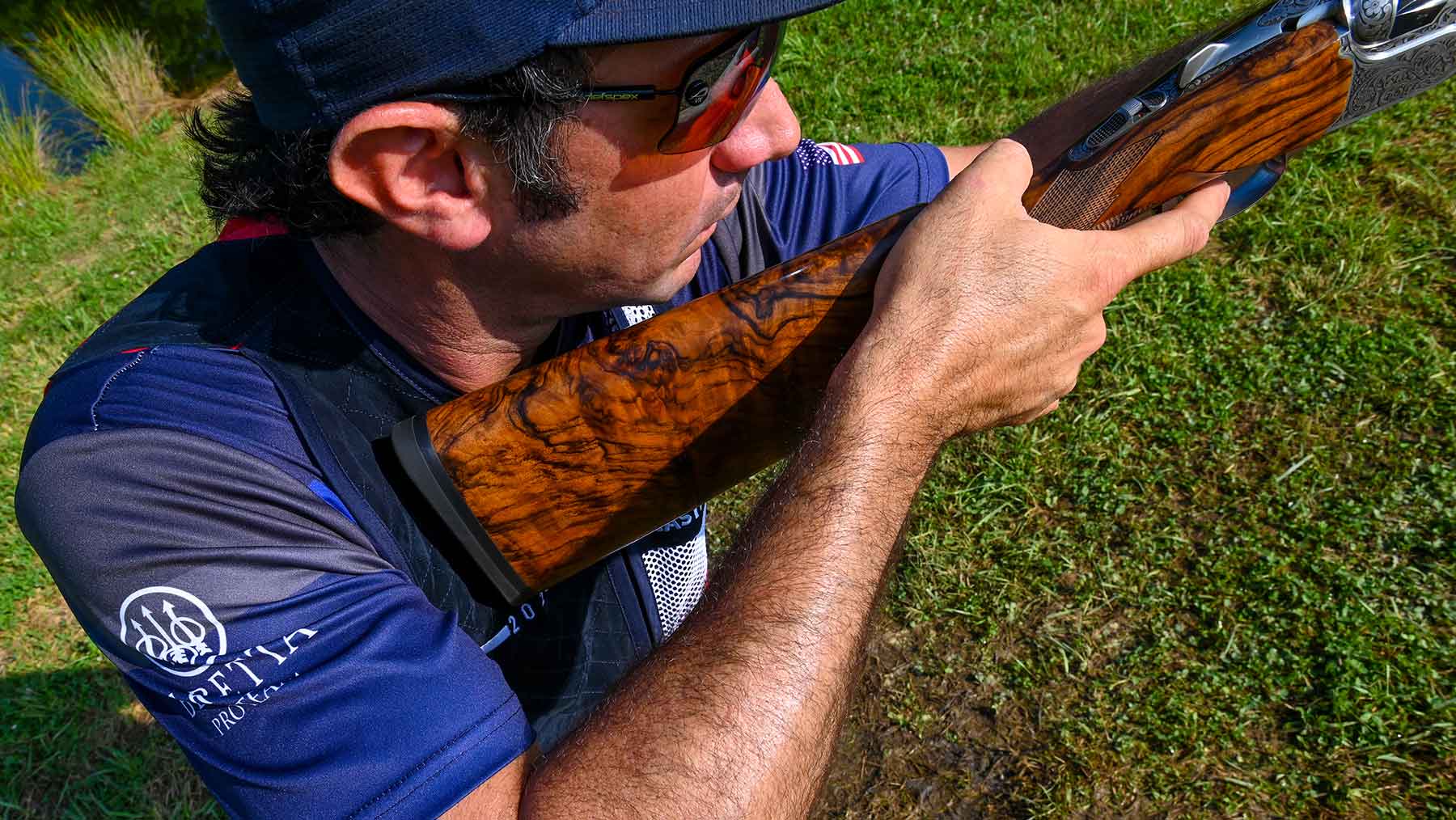Students often ask me, “Geez, I know how to hit that bird, and I hit it the first time. Why can’t I hit it four times in a row?” In many cases, they don’t have enough skill to hit it four times in a row. That skill is built through repetition—successfully performing a task over and over until you can repeat that performance on demand without conscious thought. That’s easily the biggest challenge in sporting clays.
This is how it works. First, you gain knowledge through reading, videos, or lessons, then you take that knowledge to the course and start building skill, ingraining the fundamentals with the goal of shooting in the subconscious mind. When you have built sufficient skill and shoot subconsciously, you perform your best.
That requires repetition. You won’t shoot subconsciously as a novice, but you’re going to start building that ability as you work towards becoming an intermediate shooter. And you must follow the fundamentals to get there.
So how should you practice? What does practice mean?
It’s not shooting the course with your buddies on a weekend, or shooting in a weekly league. That’s playing the game, or competing. Even if you’re just keeping score while shooting casually with your friends, you’re competing, not practicing.
In practice, you should break the game down into segments, just like any other sport. Think back to a sport you played as a kid. How did you learn to play that game? What did you do in practice? Baseball players play catch. Then they take batting practice. They break the game down into segments.
Or take golf. To improve, you go to the putting green or the driving range and work on fundamentals. In sporting clays, going to the driving range means going to a basic station, starting with the easier target, and working on the fundamentals.
Start with the easy bird because you should build your skill set and your confidence simultaneously. Again, it takes repetition—anywhere from 10 to 25 shots per target to start developing a skill. If you simply cannot hit the target, move on and try to find a similar target with less distance or speed. Build your skill there and graduate to the more difficult target.
While practicing with repetition to build your skill set, you will start developing a feel for proper technique. That’s important. You’ll also need to ask yourself some questions during the process, such as “Where did I insert the gun? Did the shot feel slow and in sync? Do I remember seeing the clay as clearly as possible when I fired?”
Some shooters will still want to “practice” by shooting the course with their friends or shooting only three or four pairs at a station. That’s understandable, but it will make your learning curve steeper.
People always ask me how much, or how often, they should shoot. It’s simple: As much as you can. If you can get out only once a month, that’s fine. If you can get out once a week, that’s a lot better. If you can get to the range twice a week, that will shorten your learning curve considerably. Three times a week? You guessed it—you will become more skilled in less time.
How will you know when the practice is paying off? You might not see it in your competition scores. After all, some courses are harder than others, and an 80 might be decent on some courses, horrible on others. Conscious, deliberate practice will not necessarily translate into higher scores overnight. It might take six months building your skills until you can start to do some of this subconsciously while competing.
But you’ll start to feel more comfortable and confident when you step up to shoot for score. Your plans will be better and more decisive, and you will have fewer occasions when you miss a target you really do know how to hit. That’s all part of the process, and you should never stop improving. Even today, after more than 25 years of shooting, I’m always working to get better through proper practice.
This article is adapted from Anthony I. Matarese Jr.’s new book “Straight Shooting: A World Champion’s Guide to Shotgunning.” It is available through his website



0 Comments